Dock Diving
What is dock diving?
There are actually three different events: Big Air, Extreme Vertical, and Speed Retrieve.
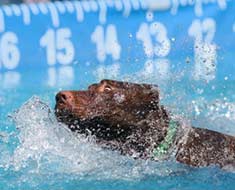
Big Air is based on the track and field event known as the long jump. The dog runs down a 40-foot dock and launches himself into a pool, chasing a toy the handler has thrown as the dog jumped. The winner is the one who jumps the farthest, as measured from the end of the dock to where the dog's butt hits the water. The current outdoor record-holder is Country, a greyhound/coonhound mix from Pennsylvania, with a length of 28'10" attained in October, 2005. Handler Kevin Meese must be very proud. Indoors, the record was set in April, 2007, by Rebel and handler Joann Chronister at a length of 25'11".
Extreme Vertical is based on the high jump, with the dog jumping upward from the end of the dock, seeking to reach the greatest vertical height. After knocking down a bumper suspended over the water about eight feet out from the dock, the dog splashes down into the pool. Country is also the current record-holder at this sport, with a height of 7'10".
Speed Retrieve is a newer sport than the other two. The dog runs to the water, jumps in, and swims to retrieve a toy held on a pole 38 feet past the end of the dock. The timer starts at the 20' mark on the dock and ends when the dog snatches the toy from the pole.
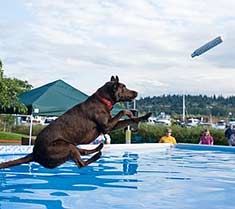
Iron Dogs compete in all three events.
Who can compete in dock diving?
All breeds of dogs, including those of questionable heritage, can compete in dock diving. Dogs under 17" tall at the withers compete in the lap dog division, while all others are grouped into the general class. If you have a medium-sized dog, as the saying goes, "If you can't run with the big dogs, don't get off the porch!" (Don't worry really - only one dog is allowed in the pool at a time.) There are classifications for senior dogs over the age of 8, and competitions geared to younger handlers, aged 7 - 15.
Who organizes dock diving events?
"DockDogs is the independent governing and sanctioning body for regional, national, and international dock jumping performance sports," according to its website. They establish the rules and standards of the sport, track results and records, and support and promote the growth of their athletes, events, spectators, and sponsors.
They stress that this is just about the only dog sport that focuses on fun! No one is there to make sure your dog looks a certain way or goes through an obstacle course in exactly the right order. It's a competition for regular people and their regular dogs. In fact, the DockDog motto is "Anybody with a dog and a ball can participate."
Depending on how far your dog jumps, he can be classed as a "Junior Jumper" a "Senior Jumper" or a "Master Jumper." The governing body also offers a $30,000 prize to the first dog that jumps more than 30 feet in televised competition.
How did the sport originate?
Strangely enough, ESPN wanted it! The sports network hired Shadd Field of Medina, Ohio to develop a dog sport for their Great Outdoor Games in 1999. The first competition occurred in 2000, and DockDogs was incorporated as the sanctioning body in 2001.
Field, who lives with four Golden Retrievers, says, "We've had everything from Chihuahuas to Newfoundlands. We even had a bloodhound a few weeks ago. He fell of the dock into the water and walked to retrieve."
A similar organization, Splash Dogs, started in 2004 and holds competitions primarily in California.
How do I get started?
One of the best things about the sport is that most dogs can do it with very little training. If your dog likes the water and can fetch something, he can compete. And he doesn't even have to be able to bring the item back to you or release it into your hand! He just has to go get it.
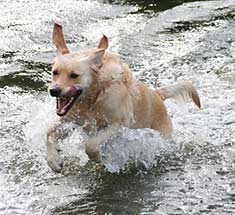
To get started, find a body of water that allows dogs in it and is deep enough so that your dog won't hit bottom when he jumps. Make sure your dog likes to get in the water and show him how to get out. If you are using a pool, show him the exit ramp; in a lake, show him the shallower water where he can get his feet under him. Some trainers suggest you have the dog enter the water the first few times via the planned exit route so he is not worried about how to get out. They also recommend using this reverse route at competitions or alternative training places for your first practice jumps.
Pick out a fetch toy that will float, and make sure your dog is nuts about whatever you choose. He will be more motivated to fetch an object he actually likes. Many handlers train with hunting dummies, but it is best to pick whatever your dog prefers.
Bring your dog to the edge of the water and put him in a sit. Sit next to him and shake the toy, teasing him enough to get him pumped up about retrieving it, then throw it into the water. (The toy, not the dog!)
Call the dog to come back, hopefully bringing with him the toy. Reward him with a treat, then try it again.
Keep your training sessions fairly short, as your dog will get the best distances when he is excited, and he cannot keep up the excitement if you over-train.
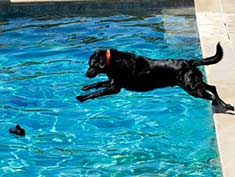
Once your dog is comfortable and excited about entering the water to get his toy, introduce him to a raised dock. The officially sanctioned dock used for competition is 40 feet long by 8 feet wide and rests 24 inches above the water's surface. Competition docks are surfaced in a non-slip surface, but your dog shouldn't be thrown by that if you train him on a wooden or resin dock. At first, just throw the toy and have your dog blast off from the end of the dock, then have him sit about 10 feet back and get a running start for his dives. Shake the toy as you release him from his sit/hold, then throw it into the water as he reaches your position at the end of the dock.
Where can I go to join in competitions?
There are affiliate clubs in most states or at least regions of the United States. Find a complete listing here.
Doggies Den: Latest Articles
 Homemade Thanksgiving Treats for Your Dog
Homemade Thanksgiving Treats for Your Dog
NUTRITION We all want to include our dogs in our holiday celebrations, but hopefully, you're aware that sharing table scraps with your dog isn't always the best idea.
 Keeping Your Dog Safe during the Summer Months
Keeping Your Dog Safe during the Summer Months
HEALTH Summer is coming on fast, so it’s time to plan how you will keep your dog safe and healthy through the lazy, carefree, warm days.
 Vaccination Time Again-Keeping Your Puppy Healthy
Vaccination Time Again-Keeping Your Puppy Healthy
DOG HEALTH So you have your new puppy picked out. There are quite a few shots, treatments and examinations that will keep the newest member of your family healthy.
 Canine Thanksgiving Feast
Canine Thanksgiving Feast
NUTRITION With the wide variety of food at Thanksgiving dinner, chances are you'll want to give your dog something special, too. If you're contemplating what to feed your dog for the holiday, here is a guide to a great Canine Thanksgiving Feast.
 Dog Walking Tips Every Owner Should Know
Dog Walking Tips Every Owner Should Know
DOG FUN Walking your dog is not only crucial to keeping him healthy and happy, it strengthens the bond between your canine friend and his caregiver. There are a lot of obstacles out there. Don’t forget these simple tips to keep your walk fun and safe in the outside world.
 The Benefits of Physiotherapy for your Dog
The Benefits of Physiotherapy for your Dog
HEALTH The same techniques that physiotherapists use to treat a variety of injuries and conditions in humans have been adapted to suit animals with great success. Family pets, show dogs, and working dogs can all benefit greatly from physiotherapy. Dogs whose activities involve a lot of agility are especially susceptible to the types of problems that physiotherapy can address.
 The Decision- Adding a Dog to Your Family
The Decision- Adding a Dog to Your Family
FIRST TIME OWNERSBringing a dog into your family is a decision where many people don’t realize it’s magnitude until after they have the dog. There are a number of things that you need to research before you decide to purchase a dog, and it starts right in your own home.
 Bringing Your Dog Into Your New Baby's Life
Bringing Your Dog Into Your New Baby's Life
HEALTH Many believe that a dog and a new baby cannot happily coexist, so therefore the dog has to go. This is not necessarily the case. A new baby does not mean you have to abandon your dog.

Doggies Den:
Most Popular Articles

Dog Pregnancy Symptoms
HEALTHIf you suspect your dog might be pregnant, check out part one in this series on pregnant dogs, where we cover pregnant dog symptoms.

Dog Birth
HEALTHIn the third article of our dog pregnancy series, we look at the wonderful, but messy, process of bringing newborn puppies into the world.

Indoor Dog Potties
DOG PRODUCTSIt's been a long day at work. You were so busy, you didn't even take time to eat a sandwich, let alone run home to let your dog out. You're on your way home, knowing the poor dog is crossing his or her legs by now, when your car breaks down, delaying you even further. Can't somebody make this easier?
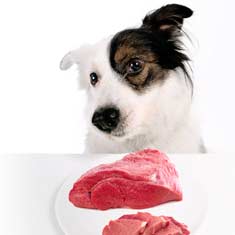
Your Dog’s Digestive System
PHYSIOLOGYEver wonder why your dog eats so fast? Or why he eats gross things? Or why he gets sick to his stomach? Or why his waste stinks so bad? Some of these things are normal, some are not.

Canine Respiratory System
BREATHINGThe basic function of your dog's respiratory system is to bring oxygen in to and remove carbon dioxide from the body. Knowing the symptoms of respiratory diseases can help you help your stay healthy.
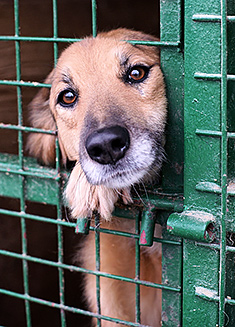
Shelter Dog Adoption Tips for Success
ADOPTION Are you intimidated by the prospect of "rescuing" a dog from a shelter? One reason that you may be wary of adopting a dog from a shelter is not knowing how to choose. Adopting a dog from a shelter can be a rewarding process, if you're prepared to do a reasonable amount of research.

Canine Urinary Tract Infections
SYMPTOMS AND TREATMENTDoes your dog seem to be having trouble relieving his or her bladder? Learn how to recognize the signs of urinary tract infections and how to treat them before they spread.

What to do for Dog Diarrhea
SYMPTOMS AND REMEDIESIf you have dogs in your house for any length of time, you have likely experienced at least one bout of dog diarrhea. Beyond the pain in the tuckus involved in cleaning up the mess, you should know what causes diarrhea, and when it's important to see the vet.
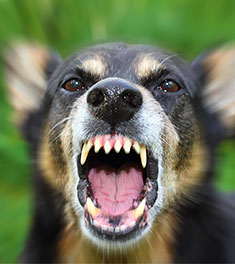
What to do for a Dog Bite
DOG BEHAVIOR Getting bitten by a dog can be scary, and you may be tempted to run around in circles for a while, trying to figure out what to do. Here's our guide to help you manage the situation.

Top Ten Tips for Living with a Senior Dog
DOG HEALTH Bringing home a new puppy is so exciting, but it doesn’t take all that long for your exuberant puppy to grow into a senior dog who may have special needs. Here are the doggies.com top ten tips for taking care of your companion who has been with you through so much.
